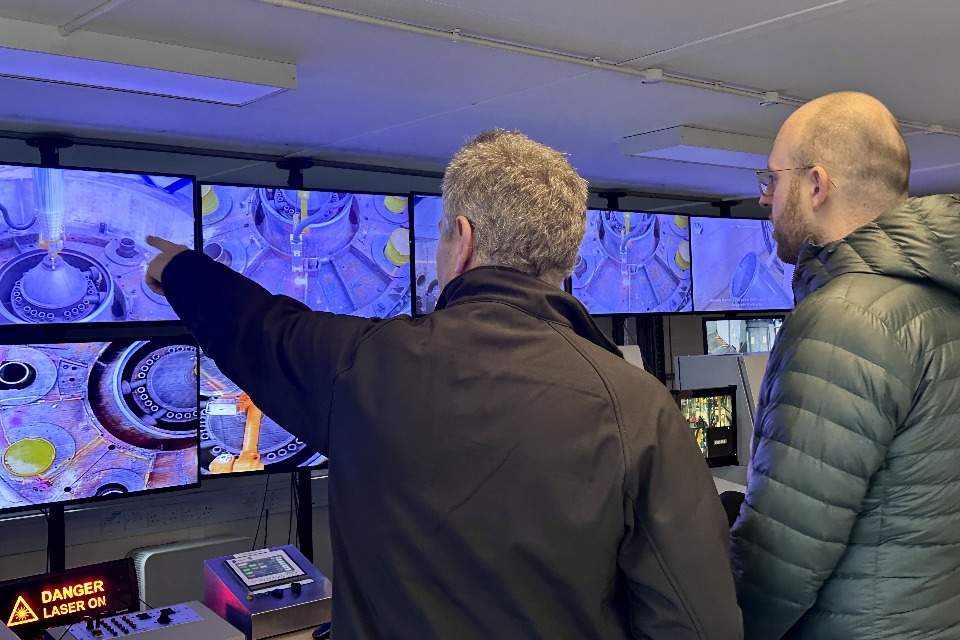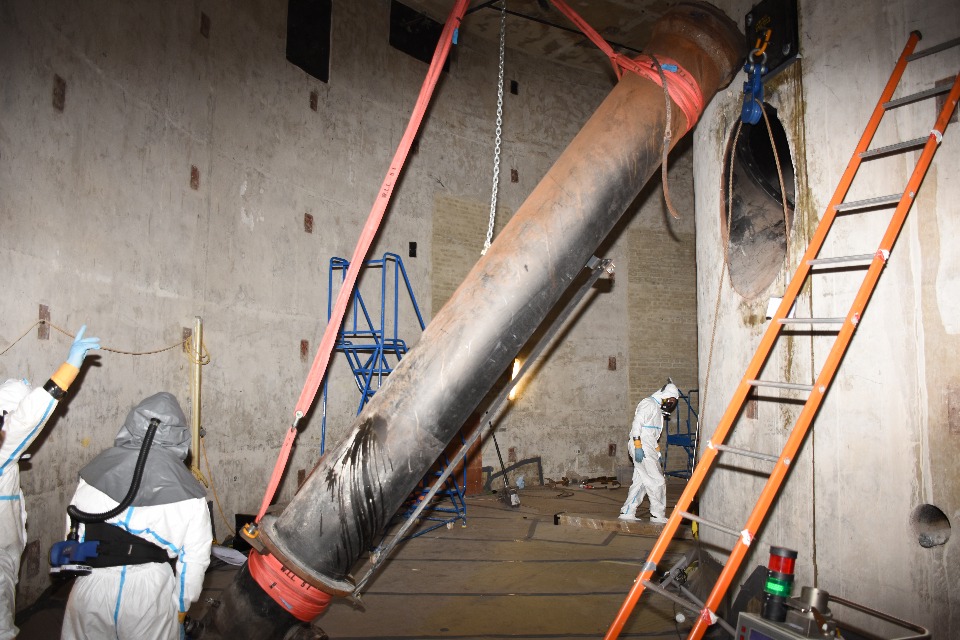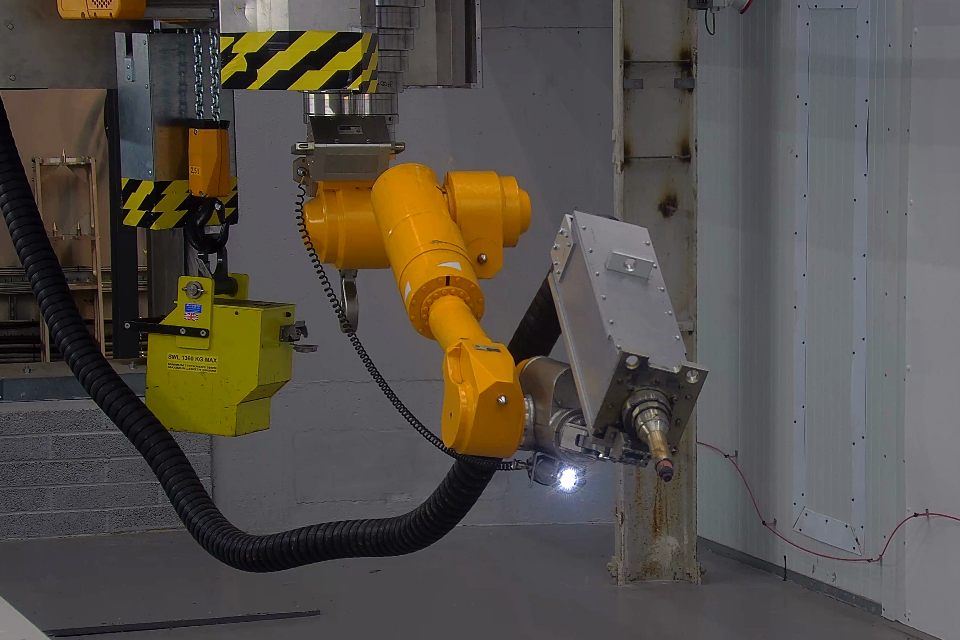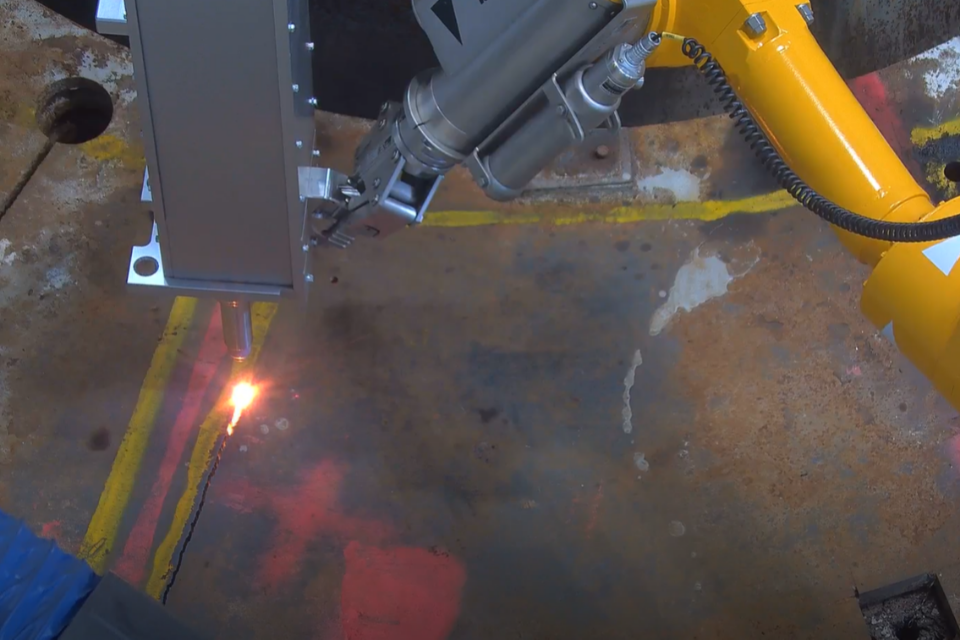South Dorset MP Lloyd Hatton has visited the Winfrith Site to see how a cutting-edge robotic laser is taking apart the site's Dragon reactor core.
South Dorset MP Lloyd Hatton has visited the Winfrith Site to see how a cutting-edge robotic laser is taking apart the site's Dragon reactor core.
MP Lloyd Hatton commented: "It was a privilege to visit the Winfrith site and witness first-hand the remarkable work being done to decommission the Dragon reactor. The innovation and dedication displayed by the team is truly impressive. The work at Winfrith is integral, both to making the UK's nuclear waste safe, and to moving the country towards a cleaner and greener future."

Inside the Dragon reactor control room

Pictured left to right - MP Lloyd Hatton, Andy Philps, Gary Reid, William Matheson, Ellanor Joyce and Robert Coan.
Winfrith site was constructed in the 1950s as a centre of excellence for nuclear reactor research which laid the basis for the development of nuclear power. Seven of the nine unique experimental reactors have been removed - the final two Dragon and the Steam Generated Heavy Water Reactor (SGHWR) are being decommissioned.
Dragon was a prototype 20-megawatt power output graphite moderated, helium cooled reactor. It began testing nuclear fuel and materials to support high temperature reactor programmes in 1964 - the year that Top of the Pops began, Beatlemania was global and the Forth Road suspension bridge opened in Scotland.
Early decommissioning removed the redundant plant components and equipment from the 100ft diameter cylindrical Dragon building, following defueling in the late 1990s. All that remains is the irradiated steel reactor pressure vessel and its core.
Driving innovation
The feasibility of using laser technology to cut the reactor core's varying material types and thicknesses was initially tested on mock-up components at the Welding Institute, Cambridge. Further testing followed with a full-scale mock-up at Winfrith site.
Technical data and learning from these trials were then applied to perform keyhole surgery using a snake robot (Lasersnake) to remotely cut a three-tonne heat exchanger vessel known as the Purge Gas Pre-cooler (PGPC) from Dragon's highly radioactive reactor core in 2018. This was a first for the UK nuclear industry and its success proved laser cutting as the principal technique for reactor core dismantling over the use of alternative hot cutting techniques.

The purge gas pre-cooler being removed in 2018
Phoebe Lynch, NRS strategic innovation programme manager, said: "Driving innovation into our mission is our greatest opportunity at NRS. All the learning from the initial operational phase of using laser cutting for the Dragon reactor core provided valuable insights into the feasibility, reliability and safety of this technique. These have been applied to refine the process to deliver this new phase of reactor core dismantling efficiently and pave the way for its broader adoption within the industry."
Progress
The skilled team of operators have removed almost half of the one-inch-thick carbon steel plates that form the Top Ring Thermal Shield into removable sections using a telescopic mast-manipulator robotic arm and a laser cutter from a control room located outside the reactor building.

The laser cutting head cell

Laser cutting the Dragon reactor top ring thermal shield
Andy Philps, NRS senior project manager, commented: "It is fantastic to start the core dismantling after years of meticulous in-house engineering design, planning and decommissioning of the sub-systems in preparation for this phase.
"Once the upper shielding structures are removed, we will have access to the top of the reactor pressure vessel and then the core within."
Waste management
This is the first of eleven phases to fully dismantle the Dragon reactor core over the next few years and pack it into 6m3 concrete intermediate level waste storage boxes. These will then be transported to Harwell site for storage until the national Geological Disposal Facility is available for permanent disposal.

The Dragon reactor building






